In the 18th century, actors were known as His Majesty’s Servants and were entitled to wear (…)
To read WBro Leonardo Monno’s full article, click on the link below:
In the 18th century, actors were known as His Majesty’s Servants and were entitled to wear (…)
To read WBro Leonardo Monno’s full article, click on the link below:
A lo largo de los años la palabra “masón” se ha ido retorciendo a través del tiempo, desde formar organizaciones secretas que son dueñas del mundo hacer tener en control el poder tanto político como económico. Una de las preguntas más desafiantes que me ha tocado desafiar es ¿realmente todas estas especulaciones son verdaderas?,¿los masones son en verdad lo que dicen ser? A lo largo de las investigaciones que hice, lo único que encontré fueron más preguntas de las que esperaba encontrar.
Vamos a empezar con lo esencial ¿Qué es la masonería?
La masonería es una sociedad secreta que junta a varios individuos con un sentimiento de fraternidad. El objetivo principal que tienen es la búsqueda de la “absoluta verdad”, creen que con el encuentro de la verdad el hombre evolucionara en todos los aspectos. Ellos tienen un templo al cual le llaman logias y también le llaman así al grupo de masones que se reúnen. Hacen un tipo de “cultos” que son llamados tenidas, ahí se encuentran todos los miembros una vez al mes, pueden hacer el ritual apropiado para iniciar a los nuevos miembros, ascender de rango a un miembro y/o debaten sobre los temas simbólicos y sociales. Todas estas reuniones son bastantes decoradas ya que los masones son bastantes cuidadosos en el tema de la decoración, en sus encuentros se puede observar como tienen todo muy bien mantenido, hasta se enfocan en el ámbito de la música ya que contratan a orquestas profesionales para sus encuentros de aniversario (la tenida que describo se llama “Gran Tenida Blanca por el 192 Aniversario Patrio” toda recomendación que dé, al final del texto pondré los links para acceder a ellas). Ustedes se preguntarán ¿Por qué son tan detallistas los masones?
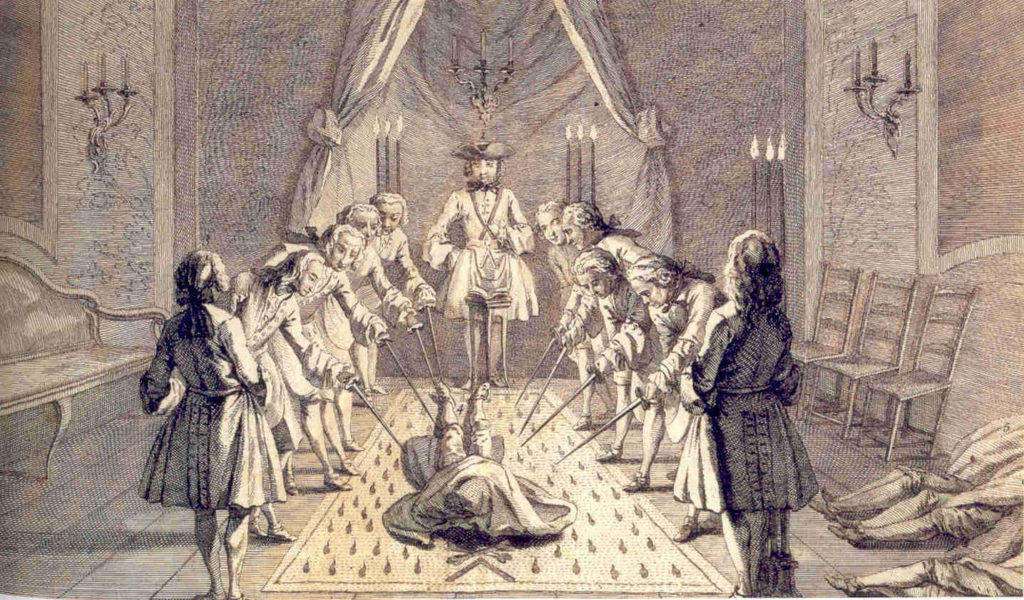
Los masones no son los únicos en fijarse en los detalles de sus encuentros, todas las religiones y métodos de creencia son detallistas ya que si encuentras un lugar todo sucio nadie va querer entrar ahí, no llamaría demasiada la atención y obviamente se requiere más miembros porque cada creencia quiere abarcar la mayor gente posible, sin embargo, queda otro punto más ya que los masones no buscan a cualquier persona, buscan a individuos con ciertas influencias o sino no tendría el poder que tienen ahora, y ¿Qué tiene ver el último punto con ser detallistas? Evidentemente todo esto es una táctica, porque eso demuestra el poder que tienen los miembros unidos. Es increíble como los menores detalles influyen en todo esto.
Ahora vamos a la parte más etimológica de lo que nos convoca hoy día. Logia proviene del italiano loggia que eso significa en español galería y a la vez proviene del francisco ripuario laubja, que significa “cobertizo enramado”. Bueno ustedes se preguntarán ¿qué sentido tiene todo esto? toda esta etimología fue para explicar que el significado galería hace mención a las juntas, porque en el siglo XIII los albañiles empezaron a hacer juntas secretas contra los frailes, las juntas las hacían en lugares que no estaban los frailes como los cobertizos. La palabra masón es la que me llamo más la atención, ya que en albañil en inglés es masón ¿y que relevancia tiene eso? La creencia masónica se dividió en dos corrientes la regular (que es la tradición anglosajona) y la liberal (tradición francesa) eso demuestra que desde esos años (hablamos del siglo XIII) ya había conflicto entre ingleses y franceses. Lo que más admiro de todo esto es la gran cantidad de participantes que tiene independiente de que corriente tome, como una sencilla reunión de albañiles vaya tomando tal fuerza que llegue hasta otro país.
Continue reading Influencia de la Masonería en ChileIn Freemasonry the pomegranate is the emblem of the spiritual communion that binds the Brethren together during an initiation ceremony in the Lodge and (…)
In nature the pomegranate is native to the Middle East and Asia Minor and has been farmed there since ancient times.
However, it can thrive in a variety of soils and temperatures.
Pomegranates were thought to have aphrodisiac properties in antiquity and Hippocrates lauded its medicinal virtues.

To read the full article, click the link below:
Taverns, inns and coffee houses played a meaningful role in the expansion of Freemasonry (…)
The full article is now available for reading at the following link :
One of Prince Harry’s revelations in his book “Spare” is that his older brother, Prince William, disparagingly called his wife Meghan Markle a “difficult, unpleasant, and aggressive woman”.
Harry also says that his father, King Charles, is a person who does not tolerate anyone taking the spotlight off of him, as Diana undoubtedly did and Meghan was ostensibly about to do.
However, it is well known that the Duke and Duchess of Sussex attribute their present form of exile and loss of privileges to the prejudices within the Royal Family, their “aides” and the British media. Whether you believe her or not, the British royal family has a history of hiding royal descendants that don’t fit the norm.
The Windsors, who adopted this fanciful name to conceal their German extraction and legitimate name of Saxe Coburn Gotha, have always regarded Meghan Markel an undesired household member.
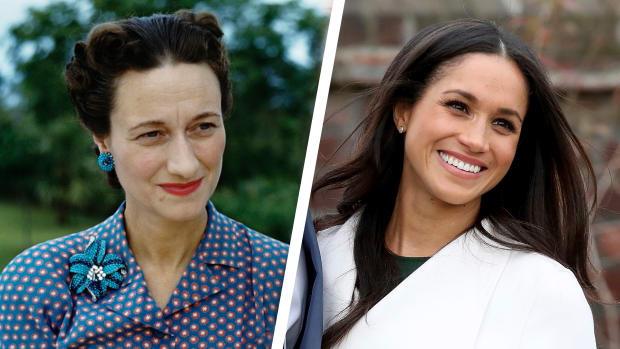
She is an American divorcee and former actress with an African heritage. Unlike Kate Middleton, Duchess of Cambridge, she does not have a noble lineage, no matter how feeble that may be. She is truly a common woman who, unfortunetly, also reminds the Royals of another difficult American divorcee : Wallis Simpson, for whom the unforgivable Edward VIII abdicated in 1936.
But look out because Meghan Merkel is most certainly neither the first nor the sole British Royal to have African ancestry; even Queen Charlotte was a mulatto!
The claim was made by an article printed in The Guardian in 2009 and written by Stuart Jeffries, from which I have extracted and edited the following piece.

WHO WAS CHARLOTTE MECKLENBURG-STRELIZ ?
Continue reading The Black Queen of EnglandOne individual whose reputation lies far from that of the archetypal Huguenot is John Jean Misaubin (1673-1734). It has been estimated that there were some 470 Huguenot refugee who practised the profession of medicine in England, from the beginning of the Reformation until the Huguenots ceased to seek refuge under the reign of George III. Dr John Misaubin was a fashionable ‘quack’ known to posterity thanks largely to the famous image of him by William Hogarth (1697-1764). He has been identified since contemporary times as ‘the thinner of the two doctors in Plate V of ‘A Harlot’s Progress’ published in 1732‘.
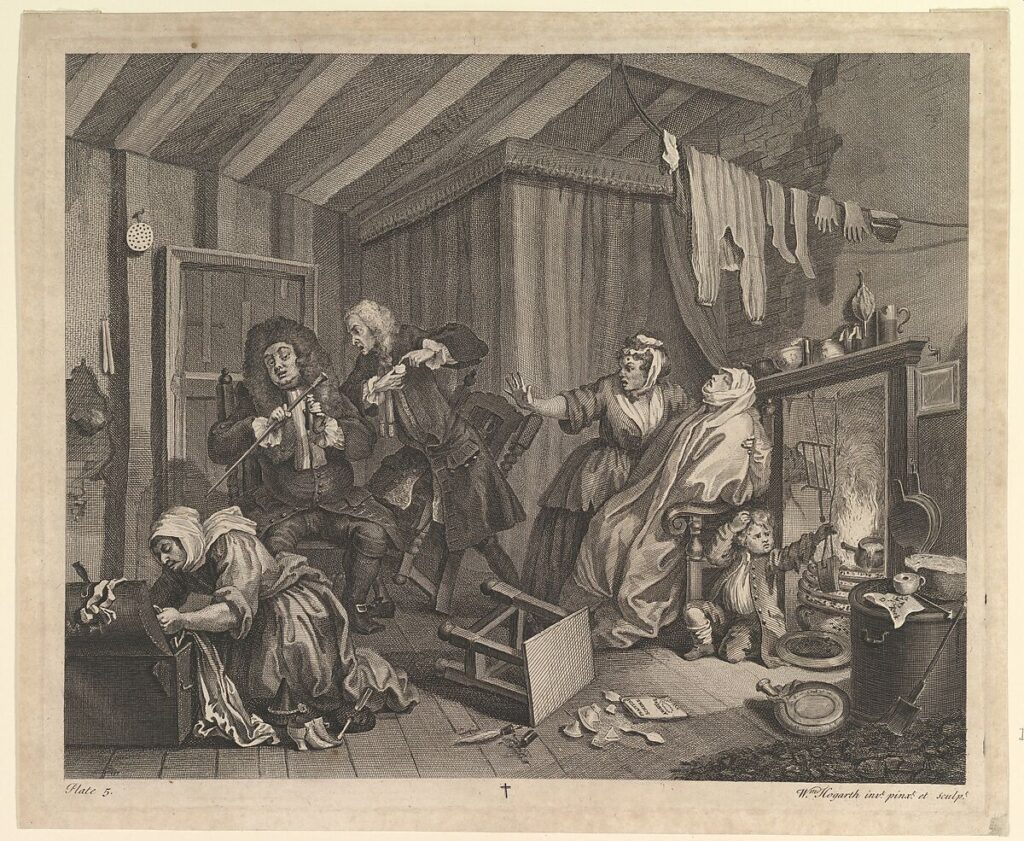
Here they are arguing the merits of their respective pills and potions whilst their patient Moll Hackabout, the Harlot, is dying of venereal disease, the reward of their calling.
Unsurprisingly, in the light of Hogarth’s striking and damning portrayal of medical incompetence, veniality and lack of humanity, all succeeding commentators over the years have repeated a pejorative refrain and called Misaubin a “notorious quack”.
Misabubin has a presence in another of Hogarth’s great modern moral subjects’ series, his ‘Marriage a la mode’ of 1743-45.
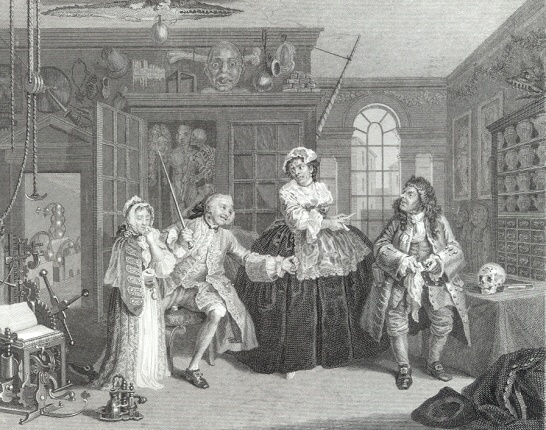
The meaning of this scene, the third in the series, has always been particularly obscure. The impoverished Count with his young girl friend is visiting a quack who has been said to be Misaubin with his ‘Irish wife’. But not only the image is not a physical representation of Misaubin, his wife Martha (Marthe) Angibaud, was too a French Huguenot. Hogarth’s reference to Misaubin lies in the setting, thought by some commentators to represent Misaubin’s museum at 96, St Martin’s Lane. Here are shown two machines; one for pulling corks and the other for reducing dislocated shoulders! The open folio on the machines reads: ‘Explication de deux machines superbes l’un pour remettre l’épaules l’autre pour servir de tire bouchon inventés par Mons de la Pillule… — vues at approuvées par l’academie des Sciences a Paris’. The other specific reference to Misaubin is the dummy with the long wig in the cabinet indicated by the Count’s cane. Misaubin lived at this address only from 1732 until his death there in 1734.
Continue reading DR MISAUBIN – THE QUACK FREEMASONWhy behind the appearances ? Because we must ask ourselves whether the events of yesterday in Russia, were part of a perfectly performed play or a sequence of ruinous actions spoilt by unforseen circumstances. What we saw in the west yesterday was Putin‘s tense face on TV in the morning, denouncing the betrayal of Motherland and promising a severe punishment to those who had betrayed Motherland Russia. The media showed us the great flames of the sun with a films of the Wagner ‘s war vehicles roaring along the highway on their way to Moscow. And then surprisingly, as the day came to a close, the same media announced to us the granting by Putin of the impunity for the rioters, and a safe exile to Bielorussia of the Wagner’s vile leader.
JUNE 24TH – ST. JOHN’S MIRACLE
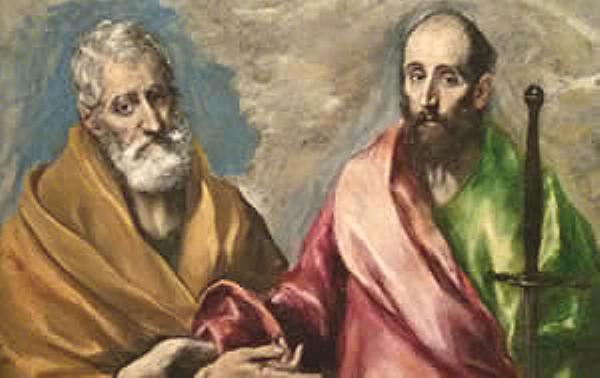
Why behind the appearances ? June 24th is the day the Christians celebrate this Saint around the world, but St John the Baptist is also the Saints’ Patron of Freemasonry ! And it was also on June 24, 1717, that the four main english Masonic lodges came together into one Grand Lodge giving birth to the “Modern” “speculative” Freemasonry. Two Protestant Christian excellent brothers, then wrote the new statutes of “Freemasonry” : the Reverend James Anderson and the Rev. John Theophilus Desaguliers.
MASONIC COINCIDENCES
In his book “Massoni”, WM Gioele Magaldi – Grand Master of the Grand Democratic Orient of Italy- basing himself on the thousands of documents that he boasts to possess – describes Vladimir Putin as a refined esotericist.

Worshipful Brother Magalli, wrote that Putin “has been a militant freemason for decades, together with Angela Merkel, both members of the “Golden Eurasia,” one of the many supranational Masonic structures which supervise the great decisions taken by the world governments.
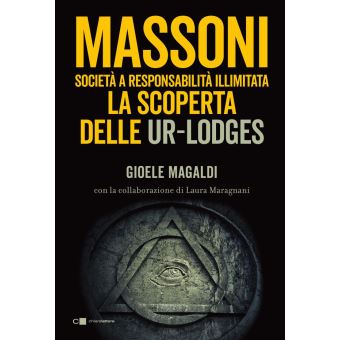
The 1680s had been a difficult decade for London’s livery companies. The Crown’s attack on the ‘Whig’ faction and James II’s assault on the ‘Tories’ had caused them to surrender their charters and be purged of thousands of their members. Elizabeth I and James I had both extracted large sums from the companies. During the civil wars of 1640s and 1650s, it is impossible to know the exact amount they contributed to both the Crown and Parliament, mostly in loans that were never repaid. Against this backdrop of political attack, court action and financial stress, it is unsurprising that many members of the Masons’ Company were reluctant either to assume or to discharge the responsibilities of office. The Great Fire of 1666 destroyed 44 company halls and devastated their property portfolios, wiping out much of their rental income. The Masons’ Company was a going concern and by 1690 it went on its knees.
To pay for its royal charter, the Masons’s Company borrowed £800 from Anthony and Anne Light in return for 22 annual payments of £80. However, it was unable to meet its obligations and defaulted on the payments, increasing its debts. By the end of the 17th century, the Masons’s Company was so short of money that, in 1681, it agreed to have only a breakfast on Lord Mayor’s Day.
With the Rebuilding of London Act of 1667, the Parliament had unwisely removed for the building worker in London any economic or legal compulsion to join a Company or Guild, thus allowing any skilled labourer to work on the city’s reconstruction on the same terms as a freeman.
The Masons’ Company’s finances improved in the 1690s due to the return to political stability under William III and Mary II and through hard work, ingenuity and generosity, the Company’s finances were put back on a firmer footing.
In 1694, the Company applied for an Act to the London’s Common Council which required all those who worked as masons in London to join the Masons’ Company.
The Masons’ Company’s Act of 1696-1705 was an initial success, with 28 men admitted to the ranks between 1696 and 1705.
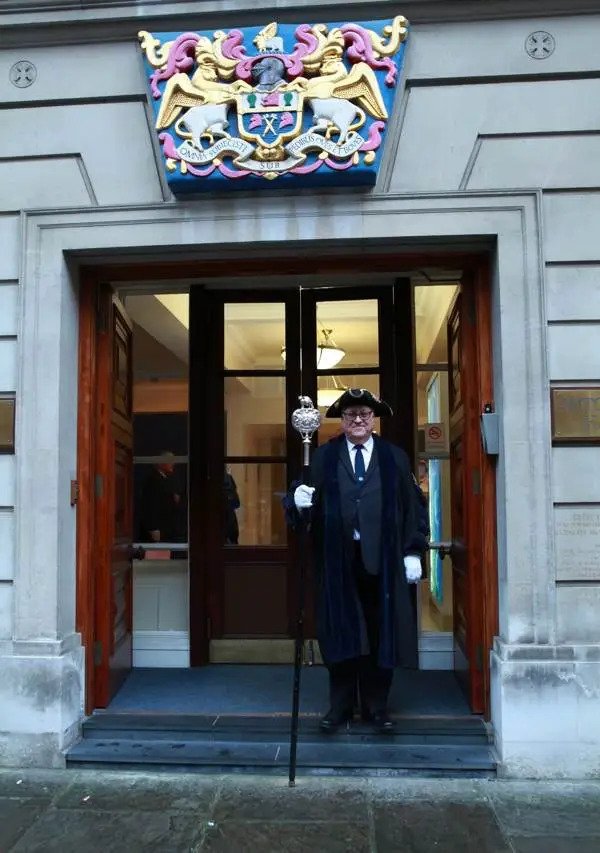
However, by 1706, the initiatives had run out of steam. To enlarge its membership, the Masons’ Company instituted two incentives: lowering its redemption fine from 36s to 3s 4d and offering a commission of 2s 6d for each admission. It seems that a lucrative market opened up at the Guildhall in redemption admissions because, following news that several other Companies were paying more for every member their ministers and officers brought , the Masons’ enhanced their gratuities to 6s.
This was an effective policy. In the 30-year period from 1676 to 1705 the Company had admitted 357 freemen but from 1706 to 1735 the number increased to 428.
More members meant more of their sons joining and receiving the freedom, which lead to more people paying quarterage and more people holding office.
David Gros or Le Gross, the Company’s clerk, was given one of the houses adjoining Masons’ Hall by the Court in January 1717 for his ‘good and faithful Services’ and efforts to introduce new members by redemption (i.e. by fee payment).
Le Gross was born in 1682 and was connected to the Gros or Le Gross of Cornwall. He was elected as clerk of the Masons’ Company in June 1708 and in 1717 he was serving as secretary to the governor and directors of the Bank of England. He probably ceased to work at the Guildhall, but he continued as clerk of the Masons’ Co, until February 1721. Le Gross was an important figure in early eighteenth-century London politics, finance and administration.
He was a prominent Whig and although not himself a Huguenot, he had connections with the French merchants and exchange brokers who established themselves in London’s stock exchanges and insurance markets. In 1708, Le Gross became Company clerk and introduced 21 admissions to the freedom of the Masons’ Company, five of which were exchange brokers. When the Masons’ Company court rewarded Le Gross for his efforts, they took particular note of the benefit and advantage the Corporation received from the many substantial Traders and others whom were recruited through his efforts. The Company’s intake of redemptioners in the early eighteenth century was cosmopolitan, with twelve of the 19 exchange brokers, admitted by redemption, not English. At least nine of those were Frenchmen wand identifiably Huguenot.
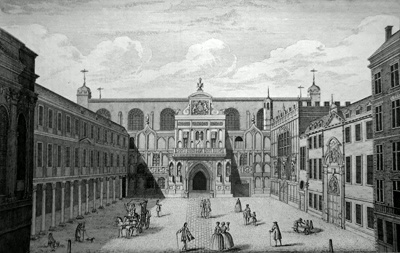
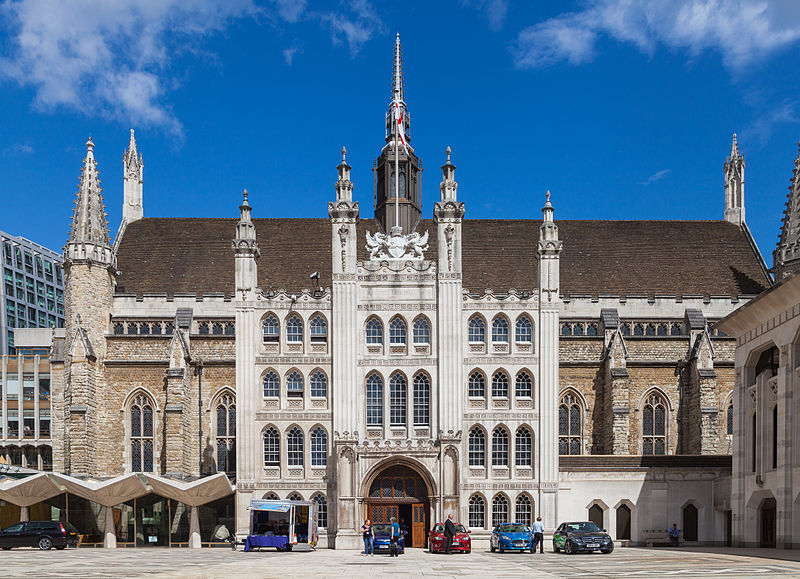
But the Company’s intake of international redemptioners was not limited to exchange brokers. Huguenots joined the Masons’ Company for the social and fraternal aspects of Company life, as it was a tradition in London, and to take the livery and thereby acquire the right to vote.
Two particularly noteworthy admissions by redemption were of women with French names, such as Mary Latour and Mary Paramor. Women had traditionally only participated in company life as wives or widows, but young women began to enter into corporate apprenticeships in greater numbers in the second half of the 17th century. As they completed those apprenticeships, they became eligible to join the Companies. In the first four decades of the 18th century, nine women – mostly business owners – took up the freedom of the Company by redemption. For example Anne Baker, who joined the Co. in March 1715, was a victualler in Finch Lane, while Anne Sparhawke and Katherine Wight, who were admitted to the freedom together in March 1735, were milliners and business partners.

Certainly, this study has shown that Huguenots diffused quite extensively into the wider livery as, indeed, they did into London society generally. It seems also that the new entrants were easily absorbed into the Masons’ Company’s ranks. There is no evidence for religious division in the contemporary Masons’ Company, and not once was the confession, or indeed the nationality, of those joining the Company marked next to the name of an entrant. A much liberal way than today! As far as members of the Masons’ Company were concerned, at least according to the official records, the Huguenots -and indeed Germans and Dutchmen -who joined the Company, were no different to any other freeman of London.
Children of Huguenot descent were admitted to the Company by patrimony, and Huguenots bound their children as apprentices. Between 1706 and 1735, two dozen of the 428 men and women who joined the Masons’ Company were identifiably as Huguenot, making them five per cent of the population of London.
In the late eighteenth and early nineteenth centuries, City’s companies completed their transformation into ‘corporations concerned primarily with the administration of their valuable freehold and trust estates and with sponsoring convivial, charitable and educational activities. In its early eighteenth-century history, no more than a dozen of the 32 men and women admitted to the freedom in 1712 identified as masons. In 1724, the Company admitted two attorneys at the Lord Mayor’s court and a clerk in the town clerk’s office, and in 1734, just 29 of the 70 men on the Company’s livery worked or had worked in the craft of masonry.
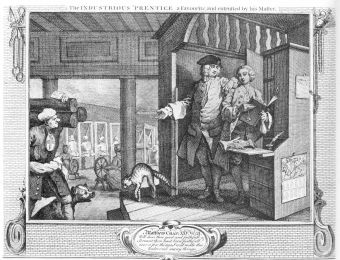
Throughout the 17th c. London Great Twelve companies had admitted more members unconnected with their traditional trades. As London’s workforce diversified and became increasingly specialised, the Masons’ Company’s membership began to disconnect from its traditional craft. This was a revolutionary development in the Company’s history and one with which Huguenots were clearly associated because none of those who joined the Masons’ Company were actually masons.
The Masons’ Company’s decision to lower its redemption fine and pay gratuities for referrals had long-lasting effects, helping to secure its future.
The Company experienced a remarkable turnaround in financial health by the end of the 17th century and certainly reached the nadir of its fortunes. In 1681, for example, it was so short of money that had agreed to have only a breakfast on Lord Mayor’s Day. In 1727, it was able to purchase £200 worth of interest-bearing stock and a property in Bishopsgate and in 1739, it spent well over £60 on food, drink, tobacco and music for the London Mayor’s Day. In 1680s and 90s the Co seems to have struggled to pay its pensions, yet in 1774, it was able to pay five men an annual pension of £2 each and seven widows one of £ 1 each. Membership of the Company was now much more attractive, worthwhile and fun.
Membership of the Company was, at the end of this remarkable period, much more attractive, worthwhile and fun and the change from operative into a speculative Freemasonry had thus just begun.
Extract from Ian Stone’s paper “Huguenots, Whigs and the Remodelling of the Masons’ Company, 1680-1740 – The Huguenbot Society Journal vol.35, 2022
Religion, the Church and Freemasonry are not constantly at odds. Pope Pius IX [1], for example, was a Freemason born Giovanni Maria Mastai Ferretti in the profane world. He was elevated to Pontiff on 16 June 1846 and had hardly been in that post three months when, to the huge regret of his masonic Brethren, he issued an encyclical against the Order. So much for Brotherly love!
Half a century later Angelo Roncalli and Giovanni Montini, better known respectively as Pope John XXIII (or the Good Pope) and Pope Paul VI, were also raised into the Great Mysteries of Freemasonry.
Both prelates saw themselves as enlightened heads of State and launched significant reforms of the Church, aimed at bringing it up with times. The changes introduced by the Second Vatican Ecumenical Council are even based on the Masonic principles and postulates. The Council addressed the relationship between the Catholic Church and the contemporary world. The Council was formally opened under the pontificate of John XXIII on 11 October 1962 and was closed by Paul VI on 8 December 1965. The reforms, however, were regarded by many as heresies.
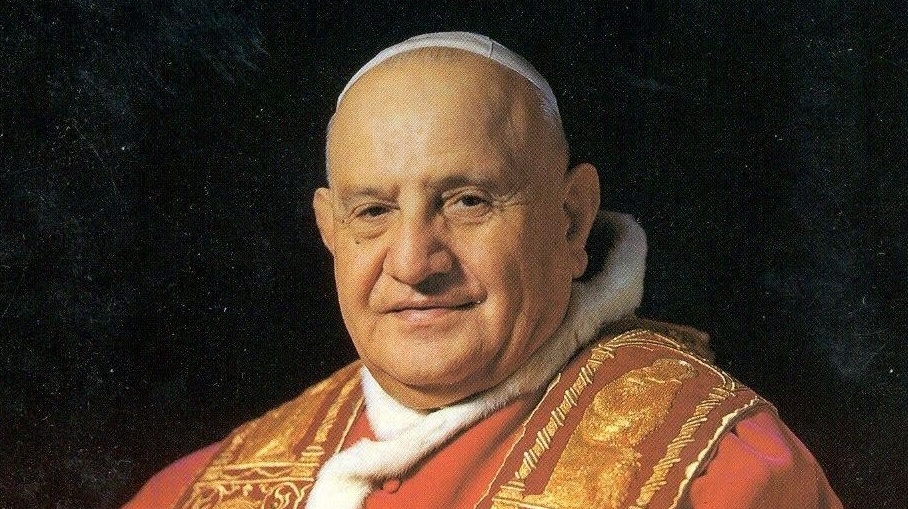
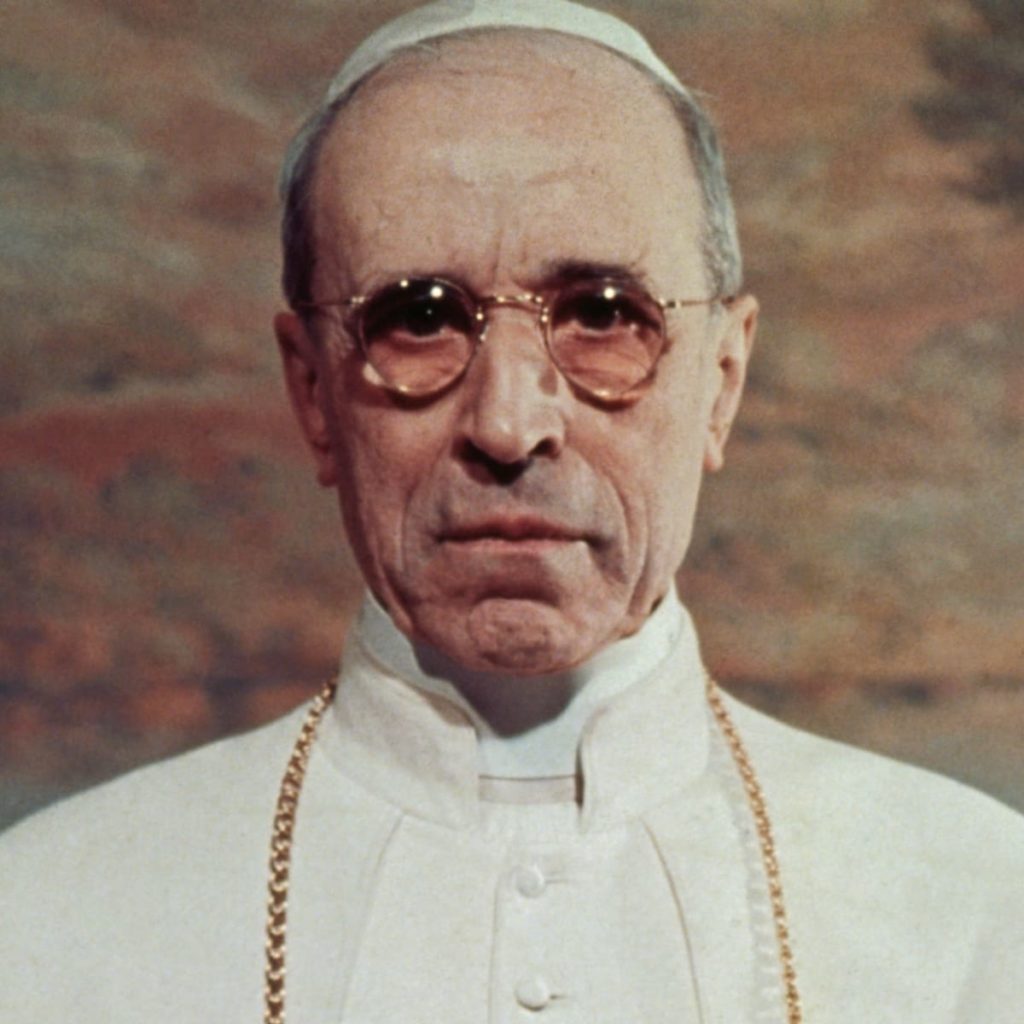
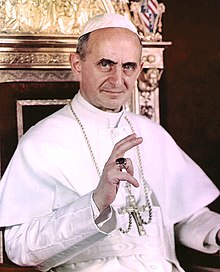
We do not know why Giovanni Pacelli/Pope Pius XII always denied the Cardinalate to Giovanni Montini. But on 24 November, 1958 Angelo Roncalli, twenty days after being installed on the throne of Peter as Pope John XXIII, wasted no time and made his brother of the Order a Cardinal at last, alongside twenty-three other prelates.
Continue reading FREEMASONS IN THE CHURCHComte de Cagliostro, an enigmatic figure of the Age of Enlightenment, whose identity and motives are still up for deliberation, inspired both Alexander Dumas to write the novel The Memoirs of a Physician and Goethe’s five-act play Deer Gros-Cophta.
The world is divided over whether he was an adventurer, a compassionate individual who used his profound knowledge of alternative medicine to help the sick, a teacher of the occult, or a charlatan who preyed on gullible rich people. Some identify the Comte de Cagliostro with the Jesuit raised fraudster Giuseppe Balsamo from Palermo, Sicily; others think he was the Comte de Saint-Germain, an alchemist who had discovered the secret for ubiquosity–being in more places at the same time – and eternal life.
Whatever you may believe, there is little doubt, however, that Cagliostro’s power to seduce has lasted the test of time. He said: “The truth about me will never be written because nobody knows it”.
As for whence he came, he declared: “I am not of any time or any place; beyond time and space my spiritual being lives an eternal existence (…) my country is wherever my feet stand at that moment.”
On December 27, 1789, the self-styled Comte de Cagliostro was arrested in Rome and taken to Castel Sant’Angelo, where he was held until his trial before the Holy Inquisition Tribunal. He received the death penalty, which was later commuted to life imprisonment at the Forte San Leo, where he passed away on August 26, 2006, six years later. However, neither his grave nor body has ever been found.
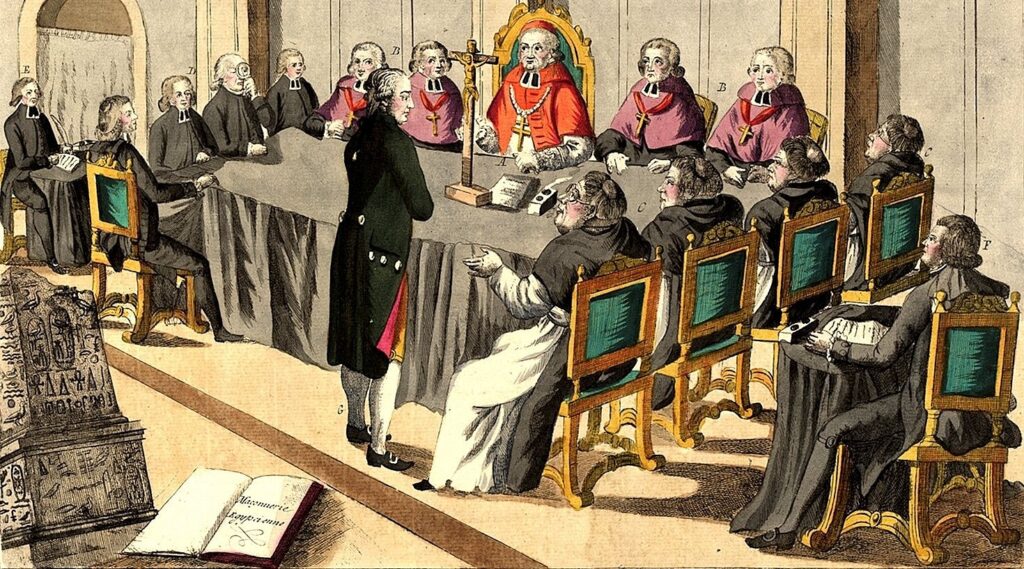
The self-styled Count was the founder of a new Masonic Order he called Egyptian under whose roof he attempted to bring both the Masonic movement and Christianity.
He founded the Mother Lodge of Egyptian Masonry in Lyons in 1784/86.
Cagliostro, the Grand Priest (Copt) of the Order, promised that he could lead his disciples to perfection and heal their bodies and souls. The philosopher’s stone would give his adepts immortality, the sacred talisman of the Pentagon promised them the obtain that innocence of spirit and perfection that belonged to Adam, the primal man.
THE TWO PROPHETS
According to legend, Comte de Cagliostro’s Egyptian Rite was inspired by the belief of immortality held by the prophets Enoch and Elias. Enoch, the seventh descendant of Adam (Jude 1:14), is said to have been “translated (by God) (so) that he should not experience death and he was never been found” (Heb. 11:5).
The term translated implies that Enoch was taken somewhere other than Heaven, which is a place where God dwells and where only a soul of the highest purity, such as Jesus Christ’s, can be allowed access.
Continue reading CAGLIOSTRO’S EGYPTIAN RITE